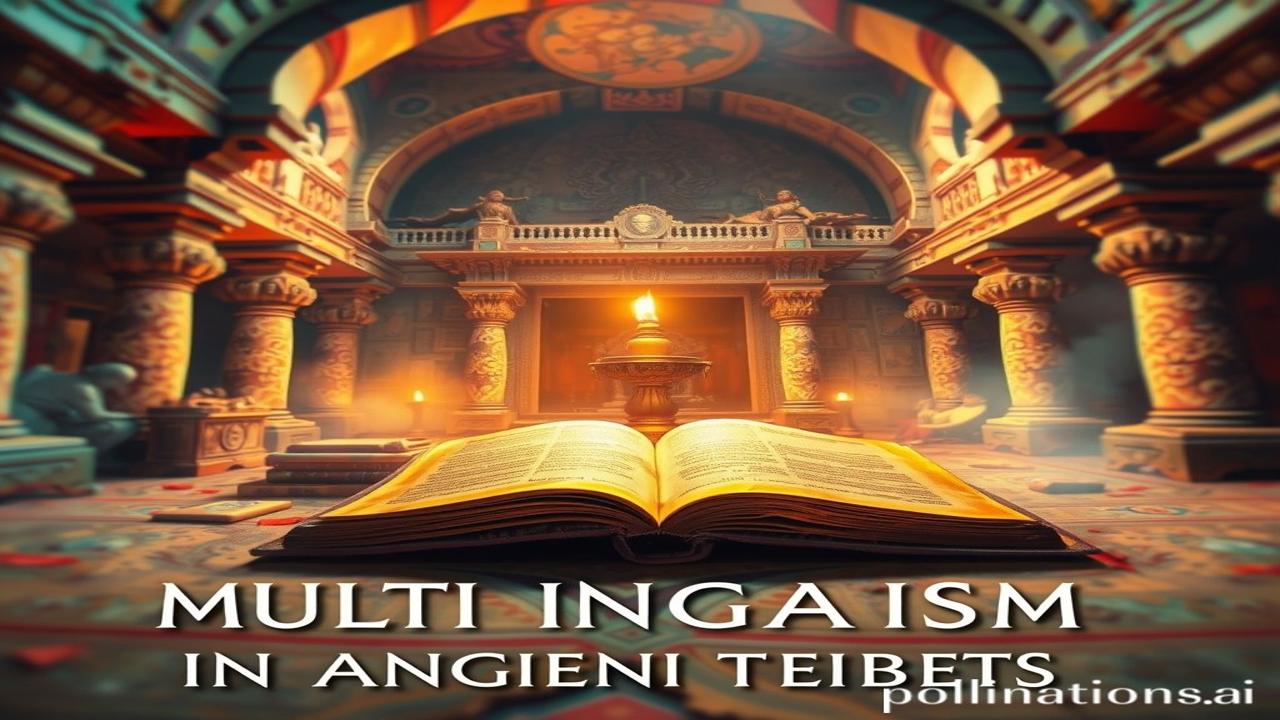Waqt Ki Zubaan: Ancient India Ki Bahubhasha Ki Kahani
Kabhi socha hai, in purani kitaabon mein, in mandiron ki deewaron mein, kya sargam gunjti thi? Waqt ki dhool mein kuch kahaniyan chhup jaati hain, kuch lafz mit jaate hain, lekin jo bachta hai, woh hai ek jazba – ek jazba aapas mein judne ka, samajhne ka, aur apni baat kehne ka. Aur yeh jazba, mere dost, bahubhasha mein bhi zinda rehta hai. Aaj hum dekhenge ki kaise Ancient India, “Multilingualism” – yaani kai bhashaon ka samaagam – ka ek jeevant udaharan tha. Let’s dive in!
Ancient India: A Symphony of Tongues
Ancient India, basically, wasn’t a single, monolingual block. It was a mosaic, a crazy quilt of different languages and cultures, all coexisting and influencing each other. This wasn’t a recent phenomenon; it goes way back! We’re talking about the time of the Vedas (1500-500 BCE), the rise of empires like the Mauryas and the Guptas, right up to the medieval period.
Iska importance kya hai? Well, it shows us that Bharatiyata (Indianness) has always been about embracing diversity. Our ancient texts weren’t confined to just Sanskrit. Prakrit, Pali, Tamil, and countless other regional languages flourished alongside it. This linguistic diversity fueled intellectual and artistic exchange, contributing to the richness of our history and culture. Imagine the sheer volume of knowledge being exchanged – stories, philosophies, scientific discoveries – all bouncing between different languages and communities!
Zameeni Sach: The People and Their Words
Chaliye, imagine karte hain… Mauryan Emperor Ashoka, apne shila lekhon mein (rock edicts), dhamma ka sandesh sirf Sanskrit mein nahi, balki Prakrit mein bhi likhvate hain, taaki aam janta tak pahuch sake. Ek Buddhist bhikshu (monk) Pali mein sutras padhta hai, logo ko dharma ka gyan deta hai. Tamil Nadu mein, ek kavi Sangam literature rach rahe hain, prem, shaurya aur prakriti ki sundarta ka varnan karte hue.
Aur yeh sirf shaasakon aur santon ki baat nahi thi. Think about artisans crafting intricate sculptures, their instructions and techniques passed down in local dialects. Farmers singing folk songs in their regional languages, celebrating the harvest. Traders bartering goods, navigating the complexities of multilingual marketplaces.
“Arre bhaiyya, yeh kapda kitne ka hai?” A farmer might ask in a local dialect.
“Das rupaiye,” the trader replies in a mix of Sanskrit and Prakrit.
“Thoda kam karo,” the farmer pleads, switching to a different regional language hoping for a better deal!
The sounds, the sights, the energy… It was a vibrant tapestry woven with countless linguistic threads.
Dharohar aur Pehchan: Echoes in Today’s India
Aaj bhi, hum ussi bahubhasha ki dharohar ko carry karte hain. The sheer number of languages spoken in India is a testament to our ancient linguistic heritage. Look at our festivals, our art, our music – they are all infused with influences from different languages and cultures.
Think about Bollywood songs – they often blend Hindi, Urdu, Punjabi, and even English! Our architecture, especially in temples, incorporates inscriptions in multiple languages. Our rituals often involve chanting mantras in Sanskrit followed by explanations in regional languages. This is not just historical, it’s alive!
Bahubhasha sirf bhashaon ki baat nahi hai, it’s about inclusivity, tolerance, and the ability to connect with people from diverse backgrounds. Yeh Vasudhaiva Kutumbakam – the world is one family – ki bhavna ka ek roop hai.
Mazedaar Tathya ya Bhram-Bhanjak: Did You Know?
Log aksar samajhte hain ki Sanskrit ancient India ki ekmatra bhasha thi, lekin yeh ek bada bhram hai! Sanskrit ek shisht aur shastriya bhasha (refined and classical language) thi, lekin Prakrit aur Pali jaisi bhashaon ka bhi bahut mahatva tha. In languages ne janta tak gyan pahuchane mein bahut bada yogdaan diya. Plus, many modern Indian languages have deep roots in these ancient Prakrit dialects.
Drishya aur Bhavnayein: A Sensory Journey
Imagine the scent of sandalwood and incense wafting through a temple, mingling with the sounds of Vedic chants and the rhythmic beat of drums. Feel the cool stone of a rock edict under your fingertips, etched with ancient words that bridge the gap between past and present. Hear the lively chatter of a marketplace, a cacophony of languages and dialects vying for attention.
The air crackles with energy, a vibrant mix of sounds, smells, and sensations that transport you back to ancient India, a land where multilingualism wasn’t just a fact, but a way of life.
Antim Vichar ya Uddharan: A Legacy of Connection
“अयं निजः परो वेति गणना लघुचेतसाम्। उदारचरितानां तु वसुधैव कुटुम्बकम्॥” (Ayam nijah paro veti gananaa laghuchetasaam. Udaracharitaanaam tu vasudhaiva kutumbakam.)
This shloka beautifully encapsulates the spirit of ancient India: “This is mine, that is his, is the calculation of the narrow-minded. For those of noble conduct, the entire world is their family.”
Let’s embrace our multilingual heritage and strive to build a society that celebrates diversity, fosters understanding, and values the power of connection through language.
